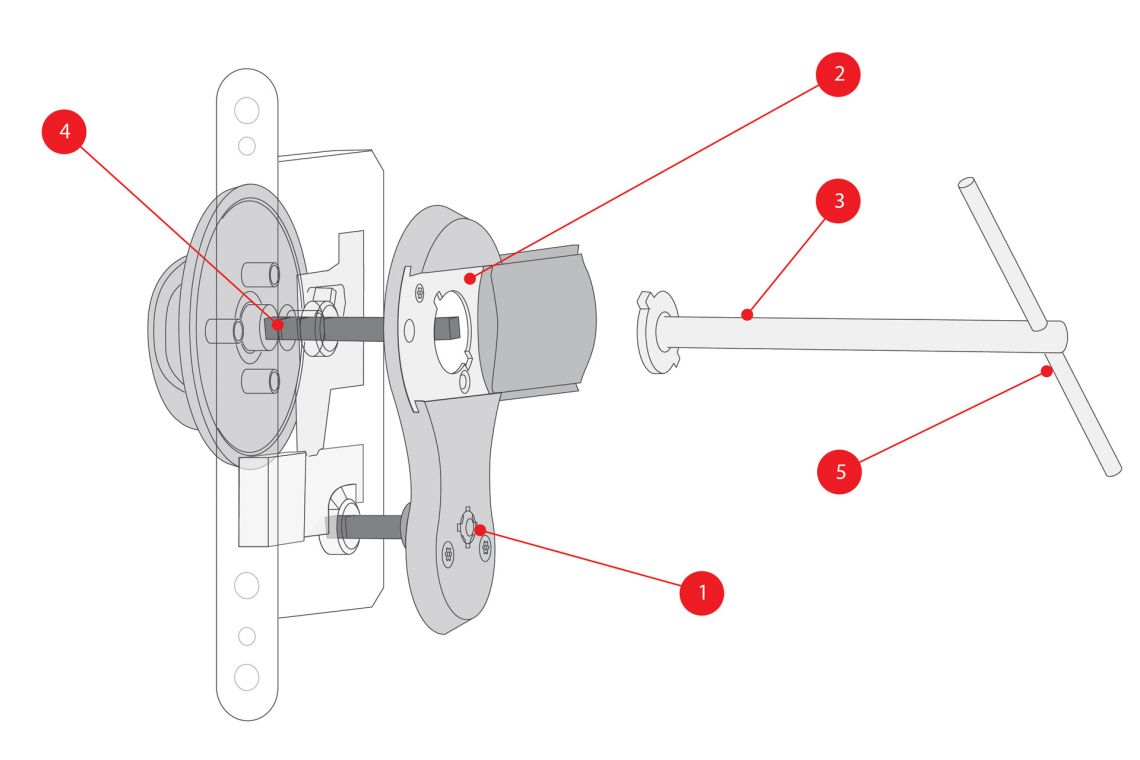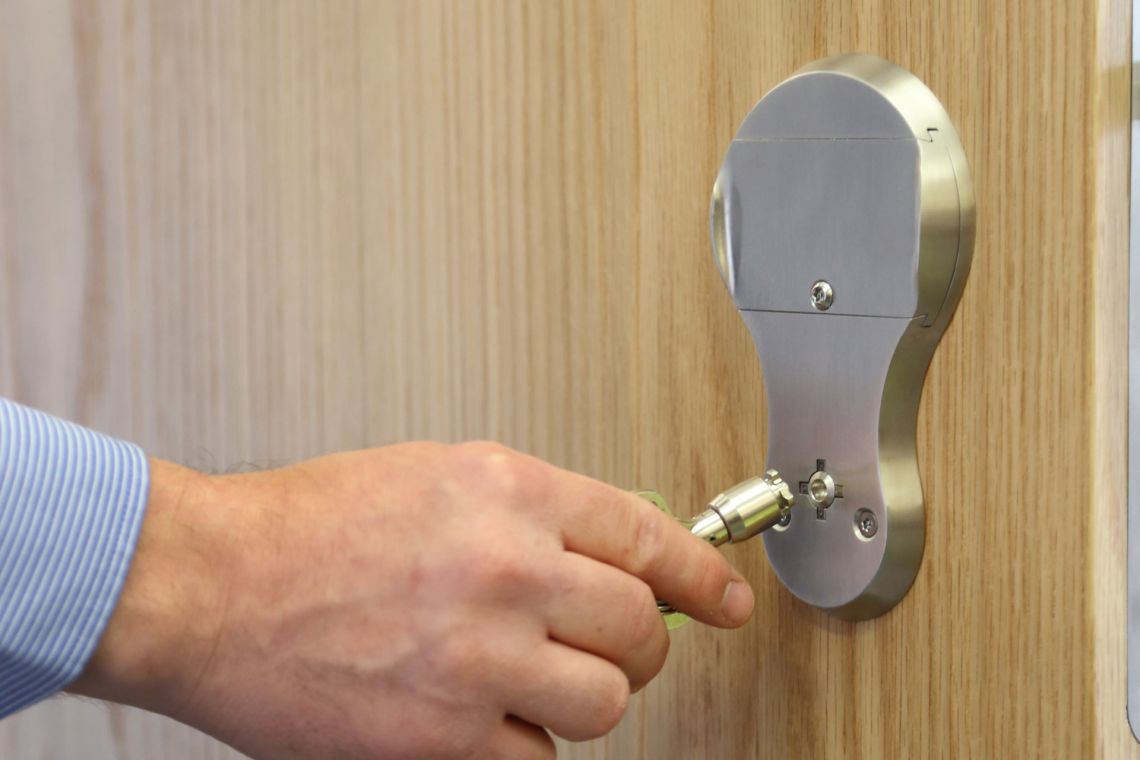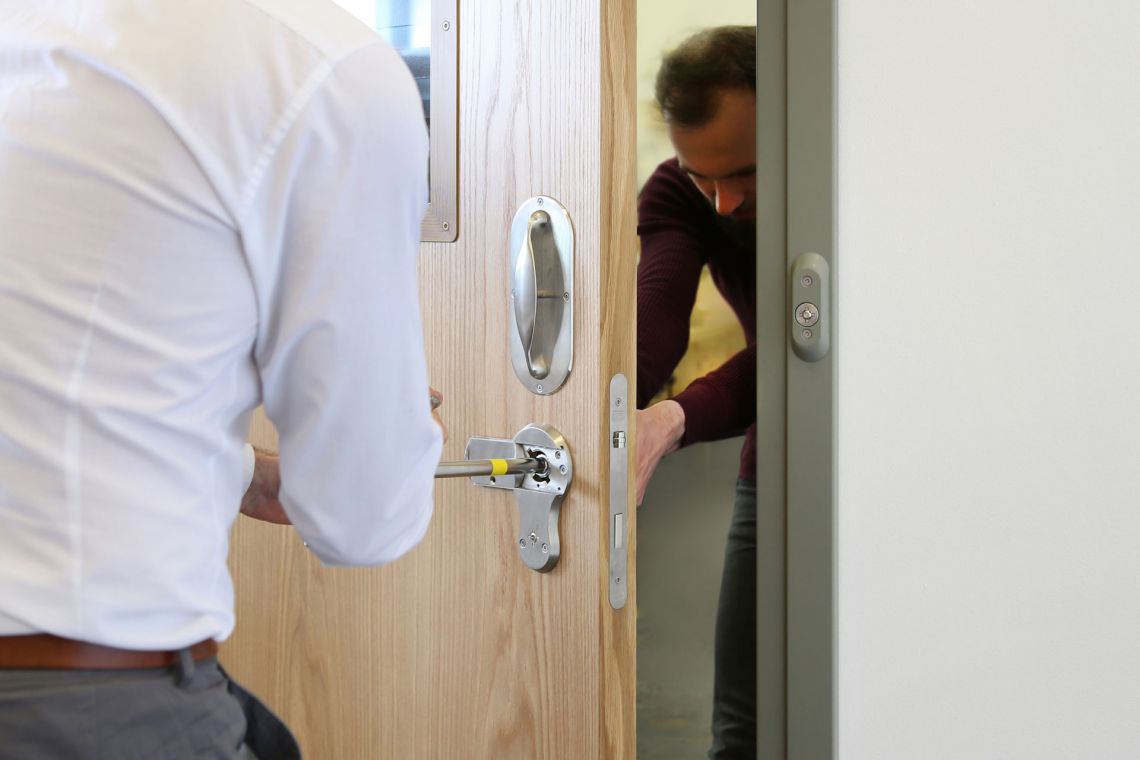- Home
- About us
- Sectors
- Mental Health
- The most complete override lockset
THE MOST COMPLETE OVERRIDE LOCKING SYSTEM
ON AN ANTI-LIGATURE LOCKSET
When facing barricade and hostage scenarios, clinical staff told us they just want to know they can get access when they need it. That’s why we developed the most complete override locking system on an anti-ligature lockset – 5-way SOS (Staff Override System).
In the most common barricade scenario – where a service user is holding the internal turn/pull – the staff key dominates the internal turn/pull (“key override”), ending the barricade quickly and simply.
For determined barricade attempts – where the keyway is blocked or the service user has jammed the turn/pull – there are four additional emergency override methods, ensuring staff can always get access – providing peace of mind and saving lives.
The result? A lockset that's been tried, tested and proven in challenging Mental Health environments to keep service users safer.

1. Key override
The lock and the internal turn/pull operate independently, so the key always dominates. It’s a direct mechanical override, so there’s no geared cylinder to disengage the turn/pull or clutch mechanism involved.
2. Keyway override
Concealed backup override directly turns the spindle, allowing entry if keyway is blocked with foreign objects, like chewing gum or paper.
3. Turn leverage override
T-bar emergency tool provides superior leverage to rotate the turn/pull, even if the service user is stronger.
4. Spindle override
Spindle shears under heavy resistance, ensuring entry if turn/pull is immobilised. So even in the most serious barricade attempts, where the service user attempts to jam the turn/pull with their bed or body, swift access is achieved without lockcase damage.
5. Pull advantage override
T-bar provides significant power advantage to pull the door open – offering better grip than an anti-ligature handle and foiling attempts by a service user to hold the door shut.
OVERCOMING SIMPLE BARRICADES
With either our 1-way SOS or 5-way SOS locksets, the majority of barricades are easily resolved by staff operating the lock with their key – ending potentially stressful situations quickly, safely and without damage.
Our patented direct mechanical override system prevents service users from holding the internal turn/pull to create a barricade – because the key always has priority.
Because this turn/pull operates independently from the key, it removes the need for a clutch cylinder, which can slip under side pressure. It also means that a geared cylinder, which can be manipulated by over-rotating the turn/pull, is no longer required.


OVERCOMING DETERMINED BARRICADES
Designed to provide complete peace of mind, our 5-way SOS locksets provide multiple ways to overcome even the most determined barricade attempt. So while these situations are rare, clinical staff know they are properly prepared to keep service users safe in their care.
LIMITATIONS OF EXISTING OVERRIDE SYSTEMS
Our research into existing override systems uncovered several limitations – which we designed out of our Staff Override System.
Clutch cylinders
Clutch cylinders
When a service user holds the internal turn/pull to create a barricade, the catch is designed to slip at a higher torque. Operating on a spring and ball-bearing mechanism, the key then turns and unlocks the door.
Over time, however, doors move, expand or distort, limiting clutch effectiveness and making entry times longer in stressful situations.
Wear and tear can also cause the clutch to permanently slip – trapping service users inside and causing distress and fire safety issues.
Geared cylinders
Geared cylinders
When the key is put into a geared cylinder, it mechanically disengages the internal turn/pull, allowing the door to be opened.
However, service users can easily rotate the turn/pull past its maximum closed position, preventing the key fully engaging. Although the key can eventually be forced home, it can damage the cylinder and the key may snap, causing risk of injury and prolonging the barricade because of a blocked keyway.
Issues also arise in rehabilitation or step- down units, where service users may have their own key. This can be inserted into another service user’s lock, disengaging the turn/pull and locking them inside, resulting in anxiety, disruption and fire safety risks.
Square drive override
Square drive override
Square drive mechanisms are sometimes used on anti-barricade locksets to unlock the door when the keyway is blocked. However, the small square drive key doesn’t always provide enough turn leverage – allowing a strong service user to prolong a barricade by tightly holding or wedging the turn/pull.
Because the square drive key simply pulls out, it provides no pull advantage or improved grip to open a door outwards.
Plus the insecure square mechanism can easily be rotated – with two spoons, for example – minimising security and creating privacy concerns. Circular shaped mechanisms can reduce this particular risk.



